
The food preferences of the wasps strongly depend on both their specific species and the stage of development of the insect. For example, the most common and common paper wasps in the adult state are not able to digest solid food, and their larvae, on the contrary, just feed on meat and relatively solid protein food.
And even at first glance it may seem that wasps feed on everything from grapes to meat and salted fish - in reality these insects are very selective in their food. The false impression of what wasps eat is due to the fact that adult insects collect food, both for themselves and for the larvae.
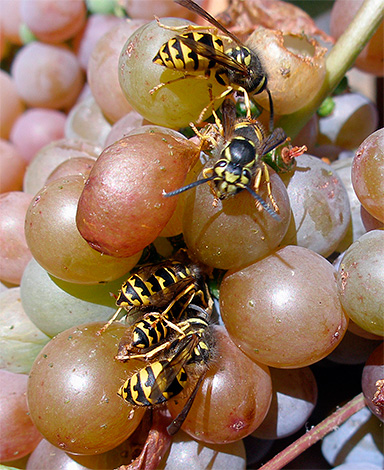
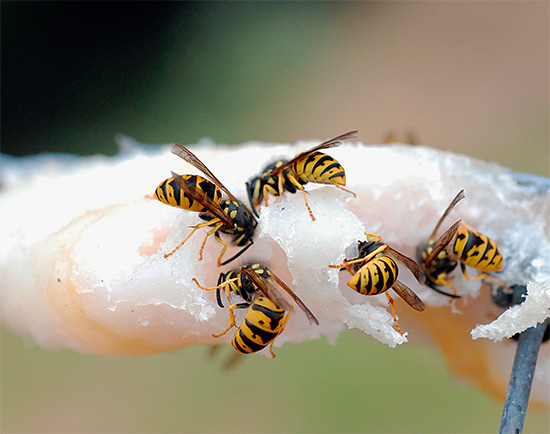
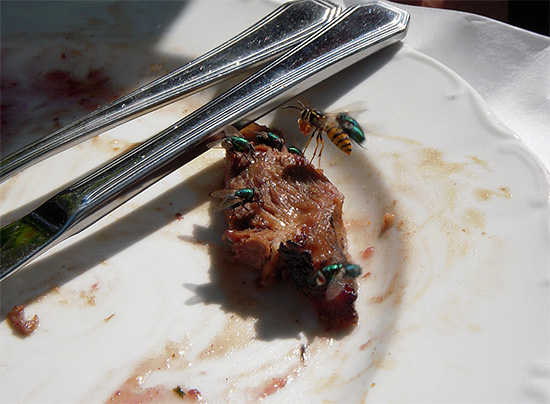
It is interesting
Strict division of the diet in adult insects and their larvae is a very effective evolutionary adaptation, which allows to avoid competition for food between individuals of the same species at different stages of development.When a larva feeds on food that an adult insect is not able to consume, a situation cannot be created in which, due to the limited food resources, individuals at a certain stage will simply die from starvation. This phenomenon is most pronounced in certain species of butterflies and mayflies: their adults are not able to feed at all. On the contrary, insects that can consume a wide range of products or live directly near a food source do not have such a separation. These include, for example, cockroaches, locusts or bedbugs.
What do adult wasps really eat
So what do the wasps really eat? The basis of the diet of adults is the juice of various berries and fruits. These products are very nutritious, readily available during the life of working insects, and in certain seasons they are truly abundant and do not require serious energy consumption for use.
That is why wasps eat strawberries, grapes, raspberries, blackberries, plums. Summer residents usually notice that insects gnaw on precisely the soft parts of the fruit, while leaving the skin on.
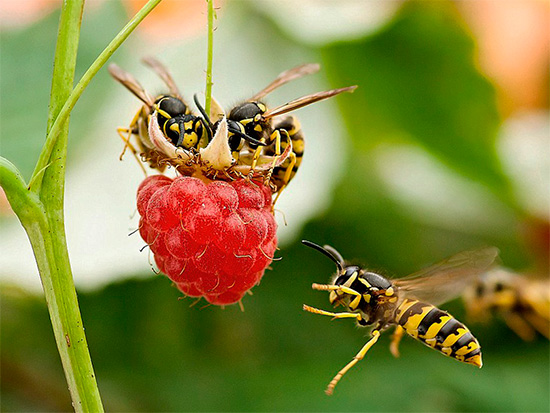
Somewhat less frequently, wasps eat apples or pears — these fruits are much harder, but being ripe, they are quite good for striped pests.
In case of damage by these insects, the summer residents are recommended to make or buy special mesh bags and, in order to protect the fruits from eating, dress them in apples or grapes.
It is interesting
Wasps are extremely partial to fermented plant materials. They flock especially to fallen grapes or apricots, often make small holes in the skin of grapes, and after a few days return and drink the juice from the places where the pulp began to ferment. Therefore, in the traps of wasps are often used Braga, beer and kvass.
In addition to natural sweets, whenever possible, wasps eat various syrups, jams, just soaked and damp sugar, honey.

However, food wasps are not limited to plant food only: their larvae are predators. Adult insects catch for the younger generation of various insects, chew on their soft tissues and transfer the resulting protein gruel to the larva. Such food allows the larvae to quickly gain weight and grow.
But even before transporting the prey, the wasp, having only just caught the prey, gnaws at it the integuments of the body and licks the hemolymph - an analogue of blood in more highly developed animals.The hemolymph is rich in proteins and fully meets the need of an adult wasp for these substances.
However, after the nurse delivers the bloodless sacrifice to the larva and feeds her, she receives a nourishing “reward” in the form of saliva, which the larva itself allocates in large quantities. This is another source of food for adult wasps, called trophollaxis, the exchange of food between the larva and the adult insect.
Do wasps eat meat and fish?
What eat wasps yet? Sometimes it may seem that wasps eat meat, but this is not the case. Insects simply gnaw at his jaw pieces and carry them to the larvae, chewing prey along the way. Thus, adult wasps do not eat meat, but give this food to their younger generation.
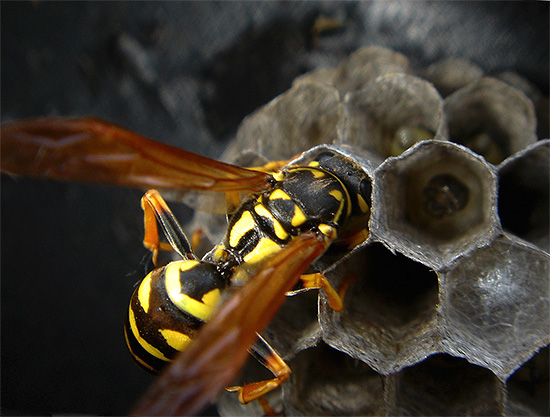
Carrion in nature, meat and fish in the markets are more accessible sources of food for striped winged predators - these products simply lie in the open, they do not need to be killed, sometimes risking their lives, and spend a lot of energy. Therefore, wasps are so numerous, for example, in fish or meat rows in the markets. In addition, near the nests of hornets often found the remains of rodents and lizards - insects find a dead animal and, without the slightest disgust, carry it into pieces in a nest.

Speaking of hornet, it is worth noting that most of them have food cravings similar to those of smaller relatives. Indeed, by and large, all hornets are a separate genus of wasps, uniting some of the largest representatives of the entire suborder. Many hornets ruin the nests of bees, feed them and their larvae on their own brood, while they themselves enjoy eating honey.
Some very large species of hornets may hunt small lizards that have just hatched from eggs or catch those who have undergone metamorphosis and will frog, but such cases are still extremely rare, and the meat of the victims themselves is used only as food for the larvae.
For some wasps, the situation with the division of food can go to extremes. For example, for the larvae of the bee wolf, the philanthropist, nectar is generally a poisonous substance, and the adult individual has to squeeze it out of the esophagus of the caught bee and eat it on its own. And the philanthian carries the bee itself into the burrow, where the descendant will eat it.
Vegetarian wasps
There is a group of wasps that even larvae feed vegetarian food. By the nature of the food, these insects are somewhere in the middle between the common wasps, feeding the larvae of meat food, and the bees, preparing honey for the offspring. These are floral wasps.As adults, they feed on the nectar of the plants themselves and prepare nectar in the nests for their larvae.
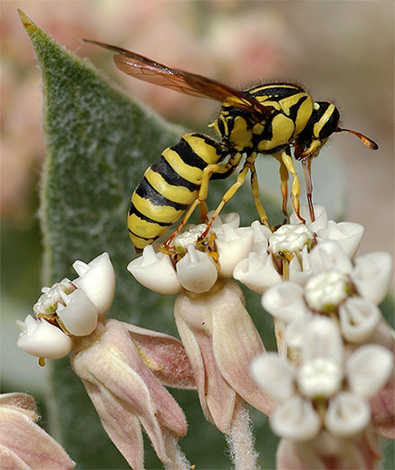
Interestingly, many types of floral wasps are similar to ordinary paper wasps, and an inexperienced observer can easily confuse them.
There is even a species of wasps Brachygastra lecheguana, which is considered to be the only, except for bees, type of insects harvesting and storing honey (Australian, African and Mexican honey ants do not count - they do not store honey, but simply store it in their bodies).
Unusual food predilections of wasps
However, this is not all: there are wasps in nature with significantly more original food addictions. For example:
- Scollies are huge wasps (among them is the largest wasp in the world, Megascolia procer), which feed on nectar when grown up, and lay eggs on paralyzed beetle larvae. Their own larvae feed on the still alive, but not able to move prey.
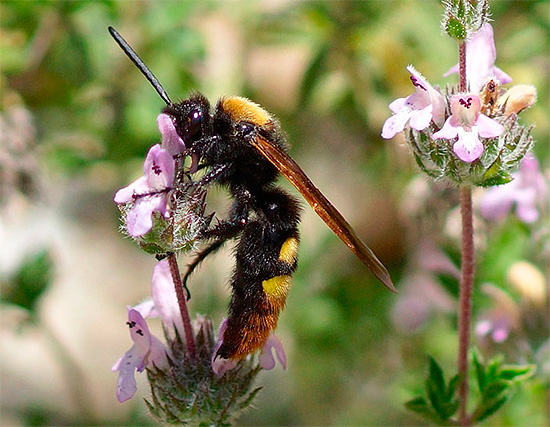
- Glacial wasps whose larvae parasitize on the larvae of other single wasps.
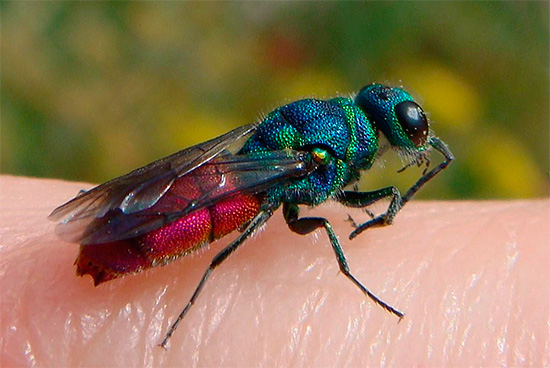
- Road wasps, many species of which feed their offspring with spiders, including sufficiently poisonous tarantulas.
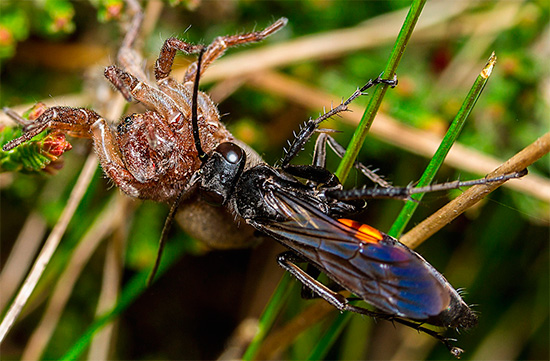
- Single German wasps, which penetrate into the nests of public relatives and lay their eggs directly on the larvae of the same paper wasps.
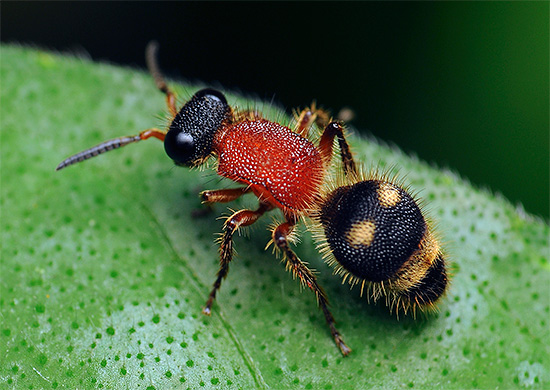
In general, in the overwhelming majority of wasps, adults feed mainly on plant food, and the larva on animal food: either by parasitizing on the victims, or by getting food from adult insects.
An exception to this rule is either the more primitive wasps, which at all stages feed on animal food, or, on the contrary, are more evolutionarily developed, who themselves consume the nectar of plants and their larvae feed them or their products.
An interesting video: a vivid example of how wasps do not eat meat, but take it to the nest bit by bit.
And here the wasps really flew to eat a pear

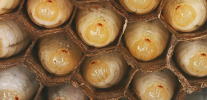
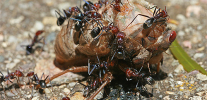

I love wasps! They are lovely. To treat them is sheer pleasure!
Entirely agree with you! In my window, a wasp has been working hard for 5 days, gnawing pulp from a half apple and turning it into balls with a diameter of 1-1.5 mm. I just don’t know what to do with it, it's a pity to intrude into the “process”, but it’s incredibly interesting to watch the activities of the wasp! At night she flies away, but returns to dawn to continue. Yesterday, another wasp flew to the remnants of an apple (dried peel) to “scan” a plate with a pile of balls of pulp and a field of activity ... Today the work of the wasp continues ...
I was stung by a wasp in the car, the bite is so sick, I killed her. I give advice: throw out the corpse of a wasp or hornet. If you do not throw it away, in 2 hours a nest of wasps or hornets will arrive and you will have a try. I do not like wasps.
I read the whole article without rewinding, because it is really interesting and absolutely not boring. Thanks to the authors for such a site!
A lot of useful information, thanks, read with pleasure.
I love wasps, I do not know why. They are very beautiful!
Wasp - a terrible and harmful insect, a very great harm to the grapes, pear, plus can sting. Aggressive before hibernation.